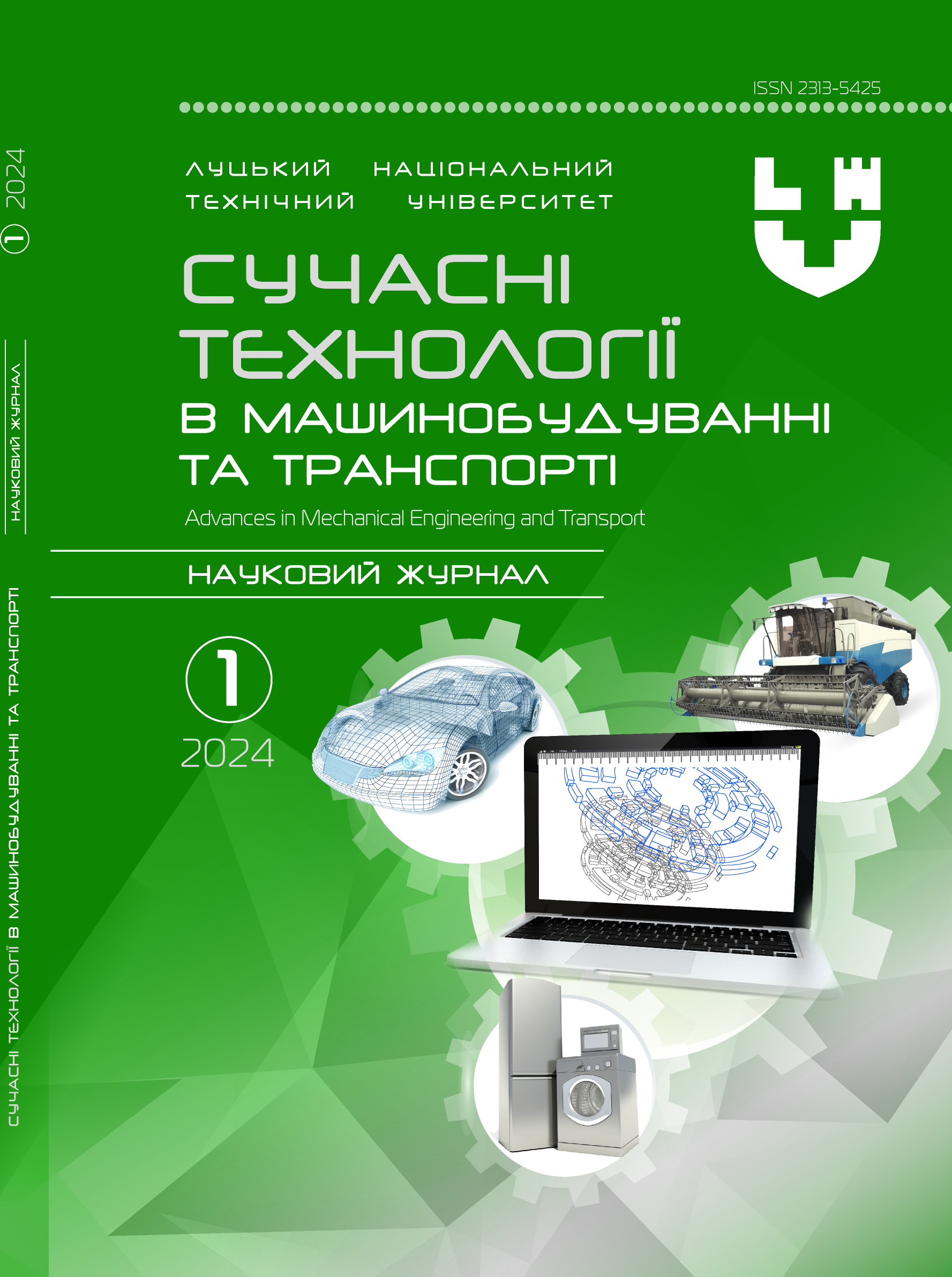Justification of the design and research of the driving resistance of the working body of the tool for deep soil dissolution
Abstract
One of the main problems of the classical farming system, which involves the use of a plow, is the formation of an over-compacted subsoil layer - the so-called "plow sole". Therefore, the leading manufacturers of tillage machinery offer a wide range of machines for deep loosening of the soil on the market.
The analysis of the structures of the working bodies in the tools for deep loosening of the soil indicates that they can be grouped into three groups according to the main design features and the functions performed. The first includes zero-mix type paws, which do not bring the loosened soil layer to the surface and keep the surface plant layer intact. The second group includes working bodies, which most manufacturers call parabolic and ensure that the fine structural fraction of the soil is brought to the surface. The third group is represented by working bodies that are equipped with a loosening shelf of one form or another.
At the same time, there is no offer of deep looseners or at least chisel cultivators for minitractors (with an engine power of up to 20-25 kW). This does not allow the loosening of over-compacted sub-soil layers to be implemented on small country plots and gardens with an area of up to 0.5 ha. Which, as a rule, are processed to a depth of 15-20 cm, and the lower layers are compacted to 30 or more kg/cm2. For this, a modernized cultivator for surface cultivation of the soil with tiered arrangement of working bodies can be used. But in order to reduce energy costs and perform high-quality loosening, the working body in the form of a dart paw needs to be improved.
Therefore, the purpose of the research is to substantiate the design of the working body of the tool for loosening the subsoil layer and to establish the experimental dependence of the traction resistance of such a working body on the depth of cultivation and soil condition. In order to solve the set goal, a shelf shape was developed for the modernization of the arrow foot into a working body for deep loosening of the soil according to the method of construction of the working surface of the plow body. According to the curves of orthogonal sections obtained as a result of the construction and the surface sweep, a test sample of such a shelf was made.
Also, on the basis of the mathematical method of planning the experiment, a method of researching the traction resistance of the existing and improved working bodies was developed. This technique allows you to obtain the dependence of the traction resistance of the working bodies on the clay of the cultivation and soil moisture in the form of a regression equation. The research was carried out in a laboratory soil channel.
The analysis of the obtained regression equations and response surfaces revealed that the influence of soil moisture and the depth of travel of the working bodies is significant. At the same time, the traction resistance of both options is almost the same for the depth of travel of the working bodies in cm and increases with the increase in soil moisture. It is obvious that this phenomenon occurs due to the fact that at the specified depth in the modernized foot, the additional shelf practically does not interact with the soil. Therefore, in the case of using the cultivator in the mode of deep loosening of the soil, it is not advisable to equip the first row of working bodies with shelves. At the same time, with an increase in the depth of travel of the working bodies up to 20 cm and especially 30 cm, an increase in the traction resistance of the modernized working body in comparison with the regular one is observed in the range of 10-40 N. At the same time, a smaller increase corresponds to a depth of travel of 20 cm and lower humidity values. Thus, the use of a modernized working body does not cause a significant increase in traction resistance compared to the regular one, which creates prerequisites for the installation of such working bodies in the second and third row of the cultivator during its operation in the deep loosener mode. This improvement will significantly improve the loosening of the lower layers of the soil without bringing them to the surface. At the same time, pairwise arrangement of paws with right and left shelves should be used.
Keywords: soil hardness, deep loosening, construction, working body, traction resistance, moisture, regression equation, response surface.




